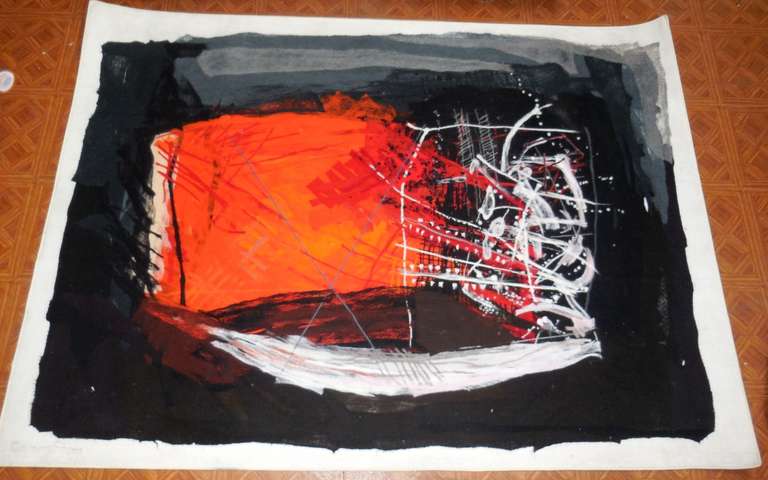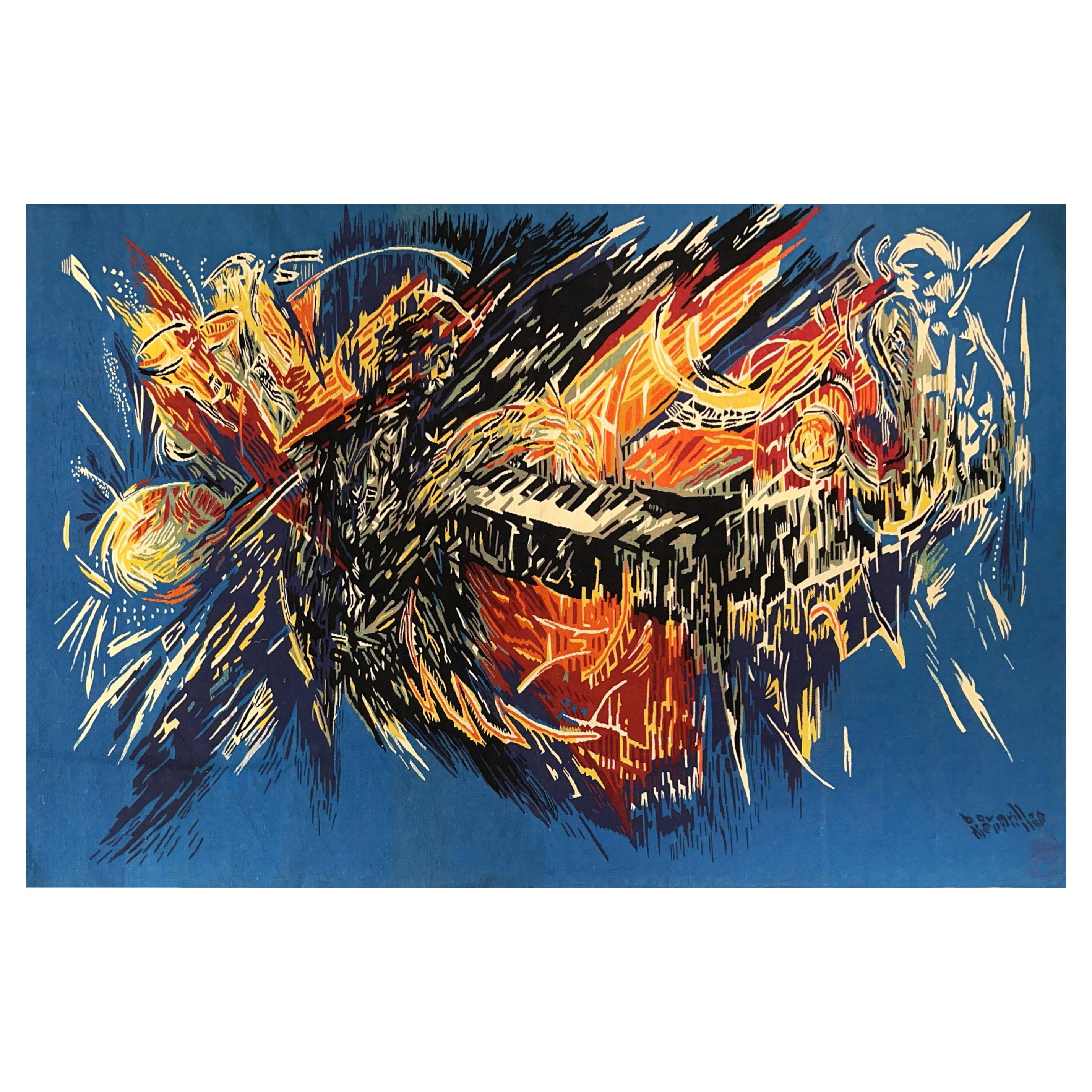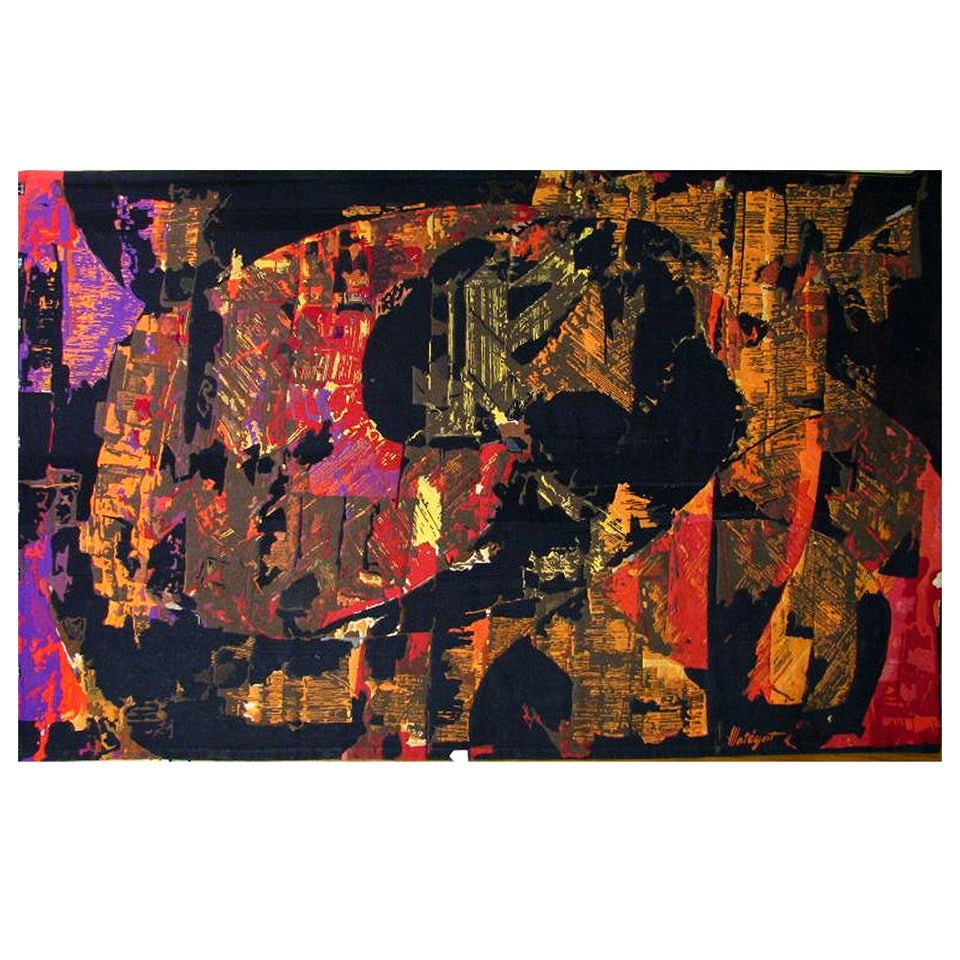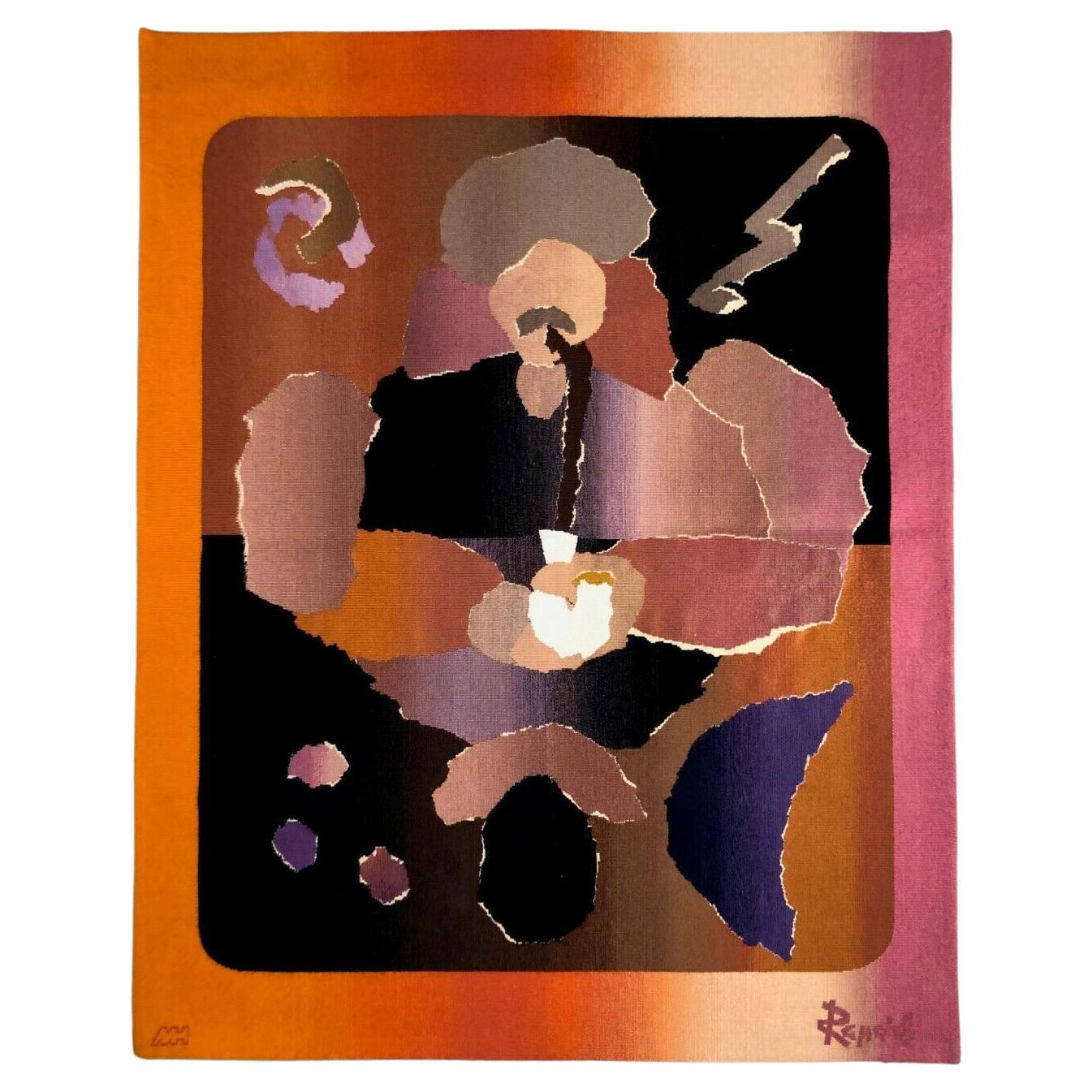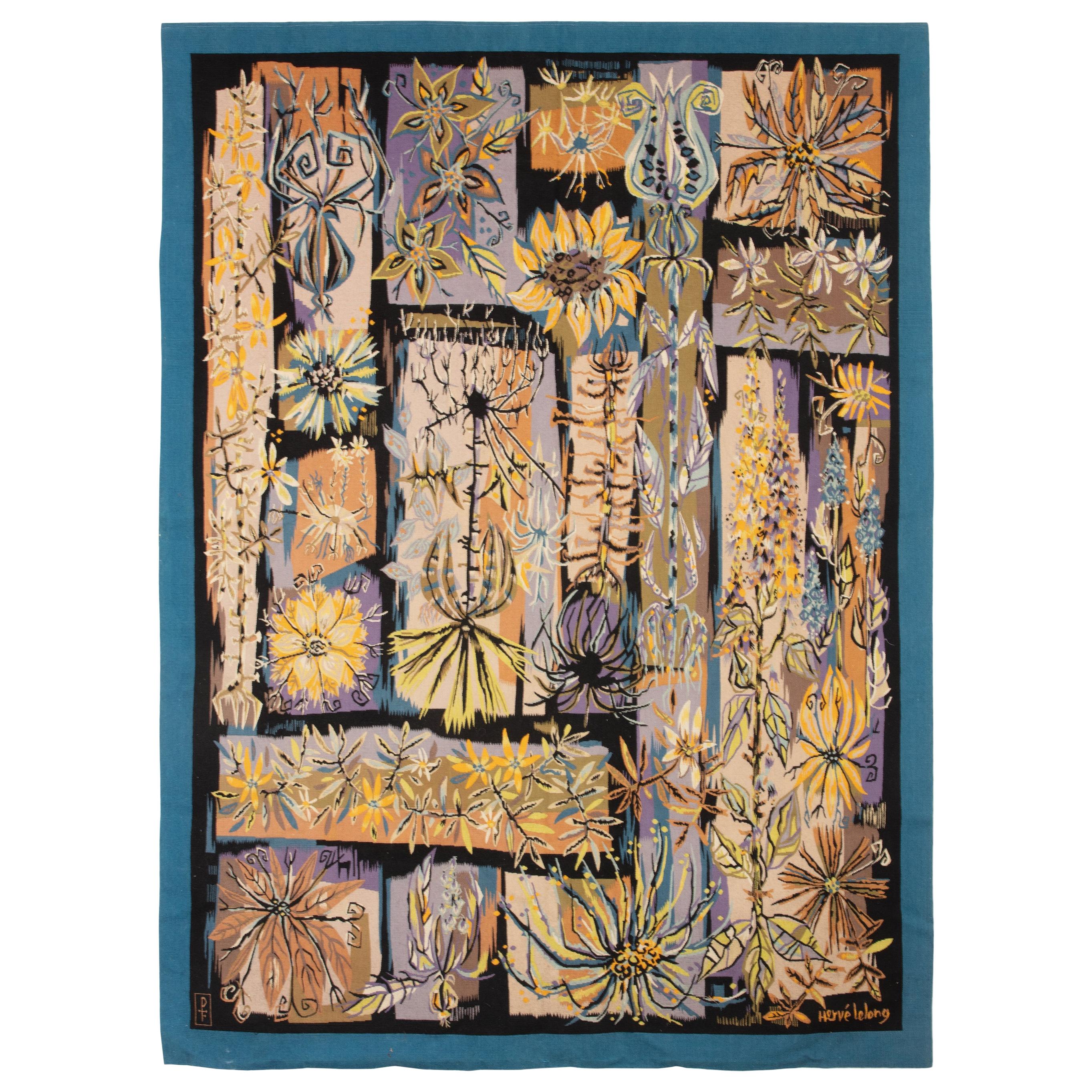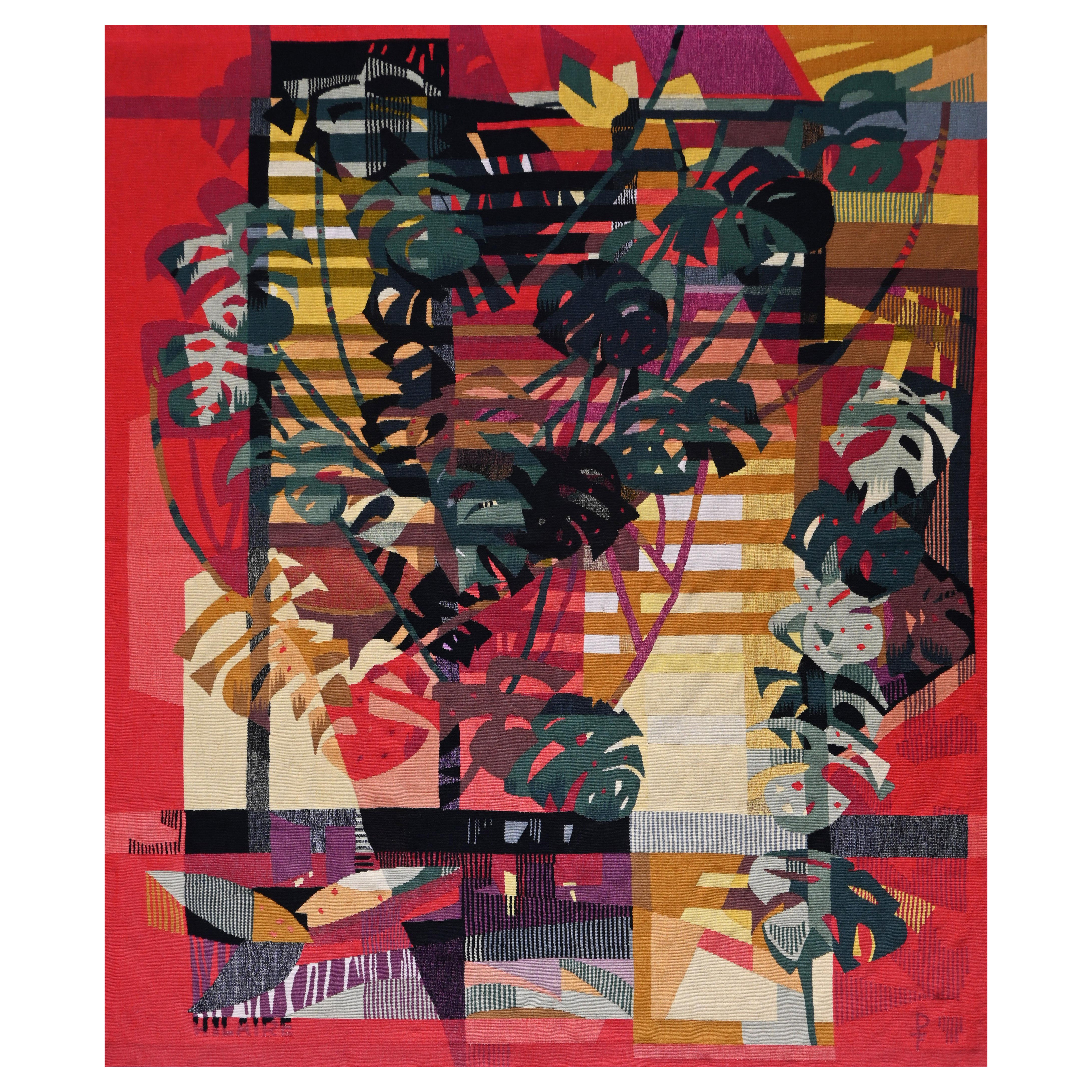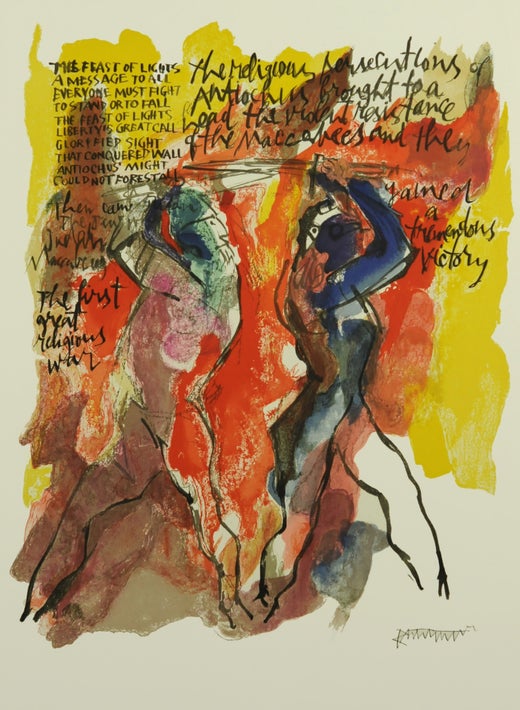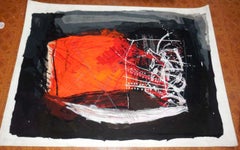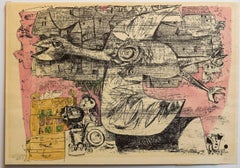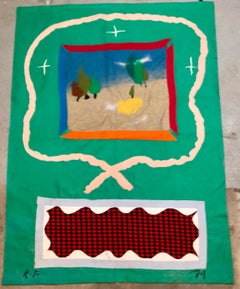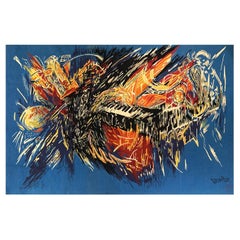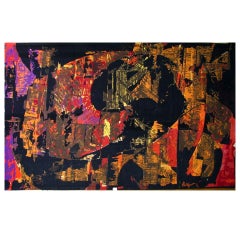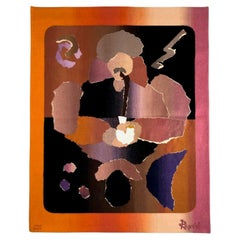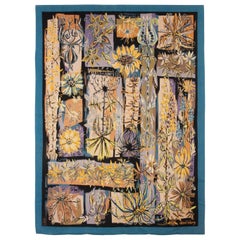Abraham Rattner (American, 1895-1978)
Hand signed Rattner on the label and signed in the weave
Edition 1 OF 8 (I do not know how many of the 8 were actually produced)
Created at Itche Mambush Atelier Workshop Ein Hod Artist Village Israel. Titled: In Memory of the Six Million
A stunning large example in a brightly colored Abstract expressionist design. A hand made made textile artwork
Dimensions: 55 X 79 inches
This is an Aubusson style flat weave hand woven wool tapestry wall Hanging. Hand signed. Executed at Itche Mambush studios Ein Hod Artists Village. Itche Mambouche worked with Marcel Janco, Mordecai Ardon, Robert Helman, Sami Briss, Abraham Rattner and others inspired by Jean Lurcat and Jean Picard le Doux. This is similar to an Aubusson style flat weave tapisserie hand woven wool tapestry. Along with the George Goldstein Atelier in Jerusalem. (Originally known as Nazareth Tapestries) They produced genuine, rare, handmade Gobelin tapestries in Israel. In 1964 the first French style weaving studio was inaugurated in Israel, in the new city of Nazareth Ilit. With the encouragement of master Jean Lurcat, woven upon several contemporary masters’ original sketches, such as Jean Lurcat, Hans Hartung, Adolph Gottlieb, Karel Appel, Yaacov Agam, Mordecai Ardon, Reuven Rubin, Danny Caravan, and more. Some of these tapestries encountered their moments of glory during the international exhibitions, such as in the Museum of Modern Art (NY), “Expo Montreal” (Canada), Biennale of Lausanne (Switzerland), and others. In 1967, after the Six-Day War, Nazareth’s workshop closed its doors and returned to Jerusalem where he opened a new studio with a young team made up of eighteen artisans, dedicating their work more specifically towards Israeli artists. The tapestries were woven upon the original sketches of Yohanan Simon, Naftali Bezem and others. They can be seen hanging on the wall of the Israeli President’s residence, the Yeshiva University of New York, the University of Haifa, New York Bank Discount, as 60-square meter tapestries for the Shaare Zedek Medical Center, Jerusalem, and in ceremonial art. Tapestries for Parochet and Torah mantles are seen in Washington, Bet-El Springfield, Babson College, Boston, Bet-El Univ. Andover, Bet-El Highland Park and the Strasbourg Great Synagogue in France. Along with Itche Mambush in EIn Hod these were the fine, Gobelin style modern art tapestry weavers of Israel.
Abraham Rattner (July 8, 1895 – February 14, 1978) was an American artist, best known for his richly colored paintings, often with Jewish religious subject matter. During World War I, he served in France with the U.S. Army as a camouflage artist.
Rattner was born in Poughkeepsie, New York to a Russian-Jewish father and a Romanian-Jewish mother. He initially intended to be an architect, in pursuit of which he studied at George Washington University. Deciding instead to concentrate on painting, he then went on to study art at the Corcoran School of Art and the Pennsylvania Academy of the Fine Arts.
With the entry of the U.S. in World War I, Rattner was recruited to join the U.S. Army's camouflage section by that unit's commanding officer, Homer Saint-Gaudens, son of sculptor Augustus Saint-Gaudens (Behrens 2009). He was sent to France, where he was "promoted to sergeant, put in charge of camouflage research, and served at the front in the Second Battle of the Marne, Château-Thierry, Belleau Wood, and on the Hindenburg Line. He received a severe back wound which troubled him for the rest of his life" Rattner lived in Paris from 1920 until 1940, when he returned to New York City. He became known for his rich use of color and surrealist aspects of his work, which often pertained to religion. Although while living in Paris, he had met and studied the paintings of Claude Monet, his work is generally closer to that of Georges Rouault and Pablo Picasso. During World War II, he again volunteered for camouflage service, but was able to do very little (Culkin 1980). Later, he taught at several schools, including The New School, New York (1947–55), and Yale University, New Haven, Connecticut (1952–53).
In 1924, Rattner married an American art student and fashion illustrator named Bettina Bedwell, who later became the Paris fashion correspondent for the New York News-Chicago Tribune Syndicate. In 1947, she died suddenly from kidney infection. In 1949, he married Esther Gentle, a New York City sculptor, painter, printmaker, and business person, who ran an art reproductions business and a New York City art gallery. Rattner was also a long-time friend of the American writer Henry Miller, who wrote about their friendship in 1968 in A Word About Abraham Rattner. He was part of a period of American Expressionism that included David Aronson, Milton Avery, Leonard Baskin, Hyman Bloom, David Burliuk, William Gropper, Ben Shahn, Harry Shoulberg, Harry Sternberg, Max Weber and Karl Zerbe, among others.
Collections
His artwork is in the Albright-Knox Art Gallery, Buffalo, New York; Art Institute of Chicago; Baltimore Museum of Art; Detroit Institute of Arts; Montgomery Museum of Fine Arts, Montgomery, Alabama; Pennsylvania Academy of the Fine Arts, Philadelphia Museum of Art; Phillips Collection, Washington, D.C.; Wadsworth Atheneum, Hartford, Connecticut; Whitney Museum of American Art, New York City; Samuel P. Harn Museum of Art, Gainesville, Florida; and the Leepa-Rattner Museum of Art on the campus of St. Petersburg College in Tarpon Springs, Florida. He designed the stained glass window Judaica east wall which dominates the interior of the Chicago Loop Synagogue (1960), described by architectural critic Brian de Breffny as "perhaps the most beautiful synagogue interior in the United States."
